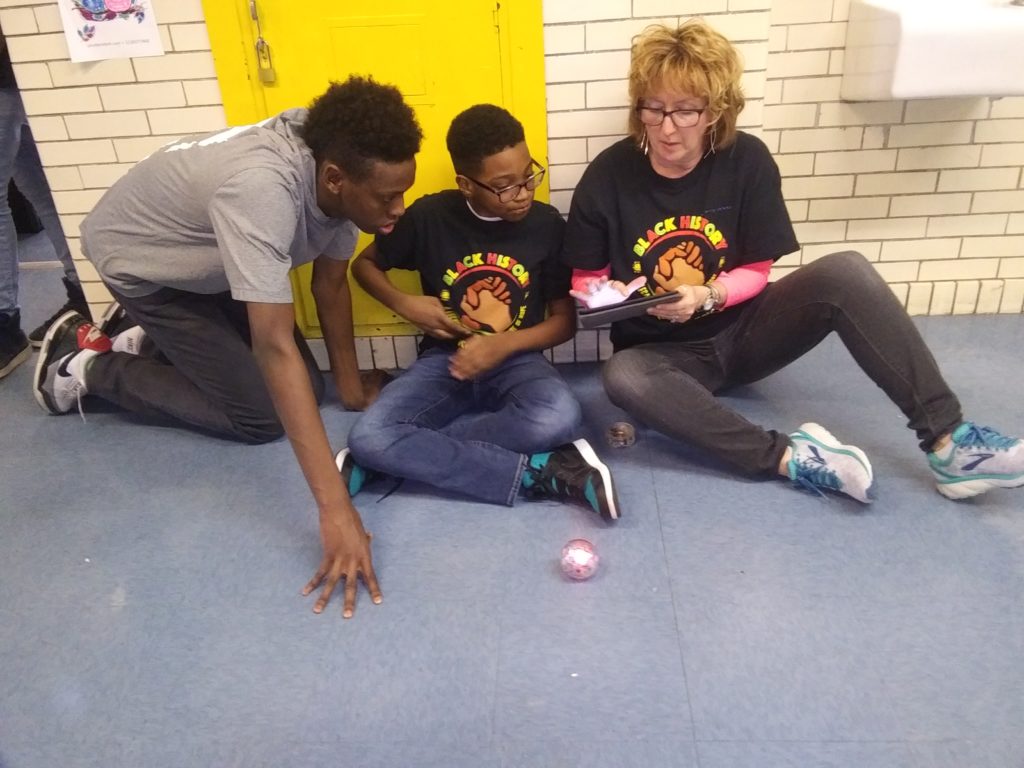Chalkbeat Chicago recently published this article on personalized learning in CPS. For folks who aren’t familiar with the topic, it was a good starting point. It gave a sense of the footprint personalized learning efforts have built in Chicago–about 100 of the district’s 600 schools are experimenting with it in some way–and noted the costs, challenges to conventional teaching practice and the lack of research supporting the approach. All this was coupled with concerns from some parents that personalized learning means their kids are spending way too much time on screens.
But for those of us who have been watching this trend develop, Chalkbeat’s piece didn’t offer much news and overlooked Chicago’s efforts to ensure that school staffs guide and control how personalization actually works, building by building. Part of the problem is, thanks to CPS central office’s fear of media, reporters covering the topic have better access to charter schools than to district schools. So the Chalkbeat piece features Chicago International West Belden, the same school featured a year ago in similar pieces by the Hechinger Report and EdSurge.
Meanwhile, what’s going on in the other 99 or so Chicago schools experimenting with personalized learning? You wouldn’t know, unless you read the great 2016 package by The Chicago Reporter, which went in deep on spending and the ed-tech business side of things. The Reporter also took a look at schools beyond CICS West Belden, including Chavez Elementary, a high-achieving neighborhood school on Chicago Southwest Side. (Disclosure: I am a parent of a Chavez student.)
Another way to get a feel for what has been going on beyond West Belden is to take a look at some of our posts here on Chicago Unheard and our national sister publication, Education Post. A couple of years ago, I had the opportunity to visit Lovett Elementary in Austin during “Flex Friday,” a two-hour block of time in which students explored their passions through projects and elective courses, which can be led by teachers or by students themselves. This is pretty similar to Kellogg Elementary’s new “Wolfpack Time,” an hour of elective courses for middle-schoolers.
These stories illustrate aspects of personalized learning that go under-reported in most coverage of the topic. While the pros and cons of ed-tech dominate discussion of personalized learning, at least here in Chicago, serious attention is being paid inside schools to other avenues of personalization, whether it be classroom design that allows for more flexible grouping and independent work, or carving out time in the school day and week to give students more say over what and how they learn.
I don’t mean to gloss over the reality that computers are a key element of personalized learning. But one thing that makes Chicago’s experience unique is that principal and teacher teams hold much of the power to determine how to put computers to work and how much time students should spend on them. For example. at Kellogg, personalization so far has focused mostly on making more use of small groups to deliver math instruction and creating the middle school elective courses. Third graders spend 20 minutes a day using Dreambox math software, but that’s it for screen time.
That’s a far cry from the deeply integrated use of computers you’d see at West Belden. And I think that’s what makes Chicago’s embrace of personalized learning stand out. The personalized, flexible approach extends to how schools choose to adopt personalized learning practices and put them to work with their teachers and students. This can be directly traced to how LEAP Innovations works with schools, which goes deep into professional development with teachers where teachers and school leaders design and implement the kinds of personalized learning they believe will work for their particular schools.
Coverage of LEAP has focused on their role as match-maker between schools and ed-tech. While that’s important to note, it’s also important to report on their professional development work with schools and teachers. From what I hear from people who’ve been part of their trainings, they are knowledgeable and helpful without forcing an unwelcome agenda on school staff. CPS is launching its own department of personalized learning, led by Errika Baker, who led UChicago Charter’s Donoghue campus through work with LEAP, and whose background in Montessori education is a natural fit with the spirit of personalized learning. It will be interesting to see how well the personalized approach to schools transfers as district central office staff begin supporting schools new to personalized learning.
In the future, I hope Chicago media will have the opportunity to go in deeper on the question of what personalized learning actually looks like in our city’s schools and how it varies from school to school. And I really hope the new mayoral administration will take the chokehold off press access to district-operated schools, for many reasons, but not least so we can see how initiatives like personalized learning actually work in practice, one school at a time.
Maureen Kelleher
Latest posts by Maureen Kelleher (see all)
- CPS Parents Wanted for Research Study - March 27, 2023
- Tomorrow: Cure Violence with #Belonging - August 17, 2022
- Still Looking for Summer Camp? - June 13, 2022
